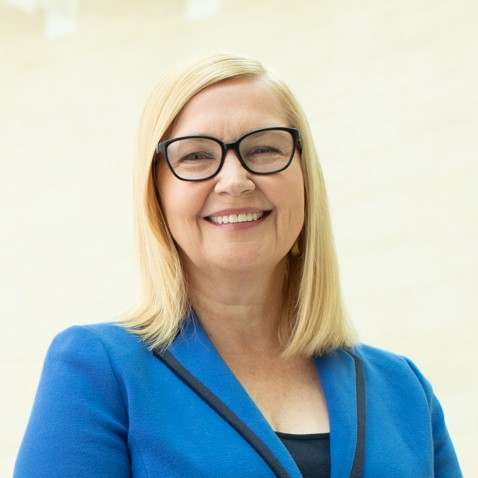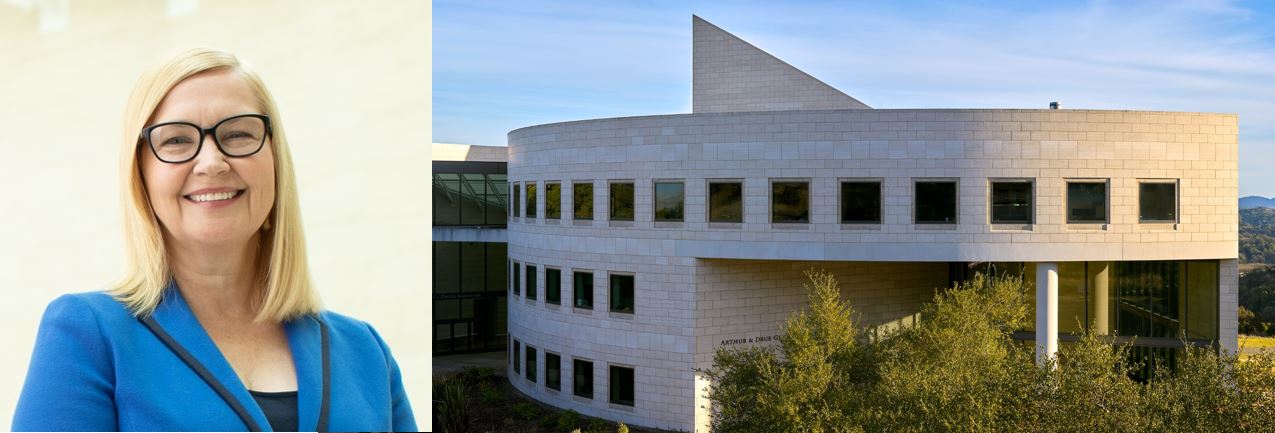by Buck Institute
September 21, 2023 . BLOG
Scientific Spotlight: Lisa Ellerby, PhD
A founding Buck faculty member’s path to seeking cures for neurodegenerative diseases

Dr. Lisa Ellerby
A love of science has taken Lisa Ellerby, PhD, on a fascinating journey exploring the roots of neurological diseases.
Growing up in the East Bay, with scientist parents (her mother was a food chemist and her father was a geological chemist), the Buck professor wasn’t terribly impressed with science. She loved dance and playing the flute, and entered college at UC Santa Cruz with her primary interest in the arts. There, she found that while she loved philosophy because it didn’t give answers and gave her a challenge, she also loved chemistry because it challenged her in a different way to find the logical solution.
Ellerby had discovered she really liked science, but had no idea what I wanted to do with it, she says. As any good scientist does, she sought empirical evidence. She volunteered to work in a research laboratory after her sophomore year. She became a bit of a master chef in purifying a protein that nobody else in the lab could do well, and she continued as a paid employee the next year.
As graduation loomed, the Chemistry faculty at UCSC suggested that she apply to graduate school in the same lab, and she thought that idea sounded as good as any. “I wasn’t very career-oriented, I was just really into science, understanding and figuring out things,” she says.
Ellerby’s PhD research focused on an enzyme called beta lactamase. On a more general level, she was studying protein folding, which was a segue to studying the plethora of diseases that are caused by misfolding.
After receiving her PhD in Chemistry, Ellerby moved to Los Angeles to pursue her postdoctoral training at UCLA. There, Ellerby studied the mechanism of an enzyme called superoxide dismutase, breaking ground in the fairly new field of free radical chemistry.
“UCLA is a big campus, and I loved interacting with lots of people and talking about science,” she says. She collaborated with some bioengineers, combining her enzymology expertise and their engineering skills. “We ended up making really beautiful colorful biosensor molecules, which appeared on the cover of Science,” she says. “It happened to be published the day my daughter was born, so that was a great day!”
Meanwhile, she continued to work on superoxide dismutase, which contains the first mutations discovered to cause ALS (Lou Gehrig’s disease). “That was super interesting to me, and it’s when I became really hooked on understanding neurological diseases,” she says.
As she was finishing her postdoctoral research, one of her medical collaborators, Dale Bredesen, MD, asked her to join him as a senior scientist at the Program on Aging at the Burnham Institute in La Jolla, CA. There, she started her own lab studying Huntington’s disease, exploring what role protein processing malfunctions play in neurological disease.
In 1998, Bredesen was offered to head the new Buck Institute for Research on Aging, and asked Ellerby to join him. She arrived in 2000 as one of the founding faculty members, responsible for recruiting staff and getting the labs up and running, starting from scratch. “In retrospect, I probably should have been apprehensive about the move; it was a brand new institute with no reputation,” she says. “But somehow, I had the same attitude I had floating from undergraduate to graduate school, just loving science…if I had a place to do science I would be just fine.”
The risk definitely has paid off for Elleby. She currently runs a lab with a diverse group of 12 scientists, and her research is diverse as well. Her studies began with Huntington’s disease and has expanded to other diseases, including Alzheimer’s disease. She has developed new technologies to enhance neuroscience, including a method of delivering “cargo” to the brain across the blood-brain barrier, using CRISPR technology to hunt for new therapeutic targets for Huntington’s disease, and using Induced pluripotent stem cells to create miniature brains for modeling the different cell types, structures and networks that can go awry in neurological diseases.
Countless technological advances and numerous collaborations with fellow Buck faculty later, many things have changed during Ellerby’s 23 years at the Buck. One thing that hasn’t changed is her commitment to finding treatments for neurological diseases.
“What originally compelled me to study Huntington’s disease was the scientific community and the patients,” she says. When her laboratory research began to overlap with the causes of various diseases, she was encouraged to join the Hereditary Disease Foundation, which includes geneticists, physicians treating patients, and patients advocating for research. It really motivates her that they begin each meeting with a patient story.
“It is sad that we have these diseases, but it is emotionally overwhelming how much people advocate and try to get their disease solved,” she says, adding that this is what really keeps her connected to what her love of science can accomplish.

SHARE